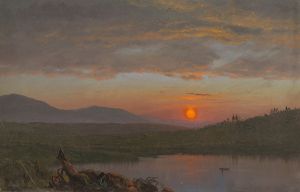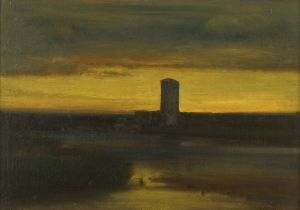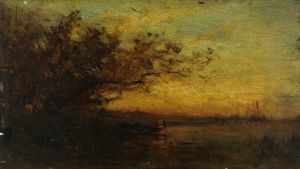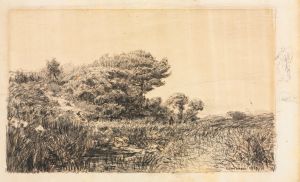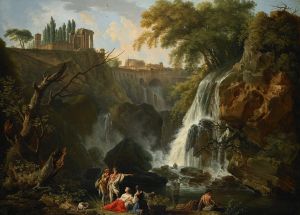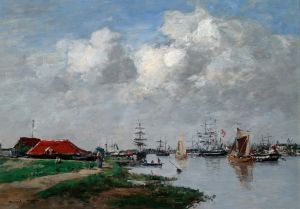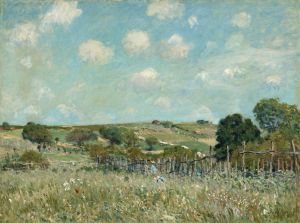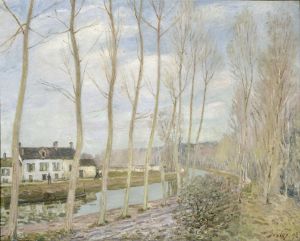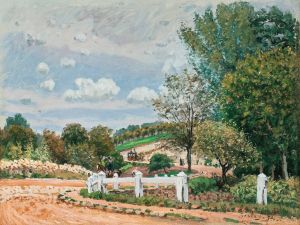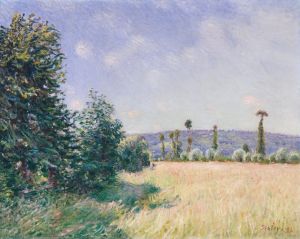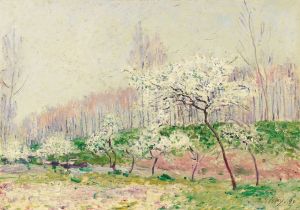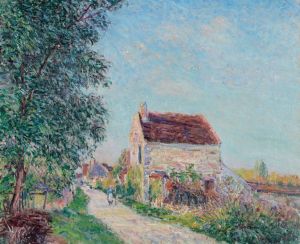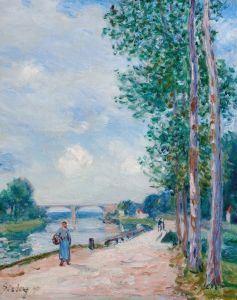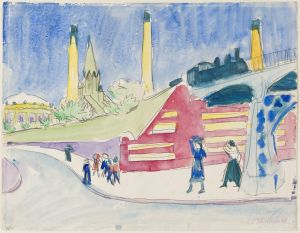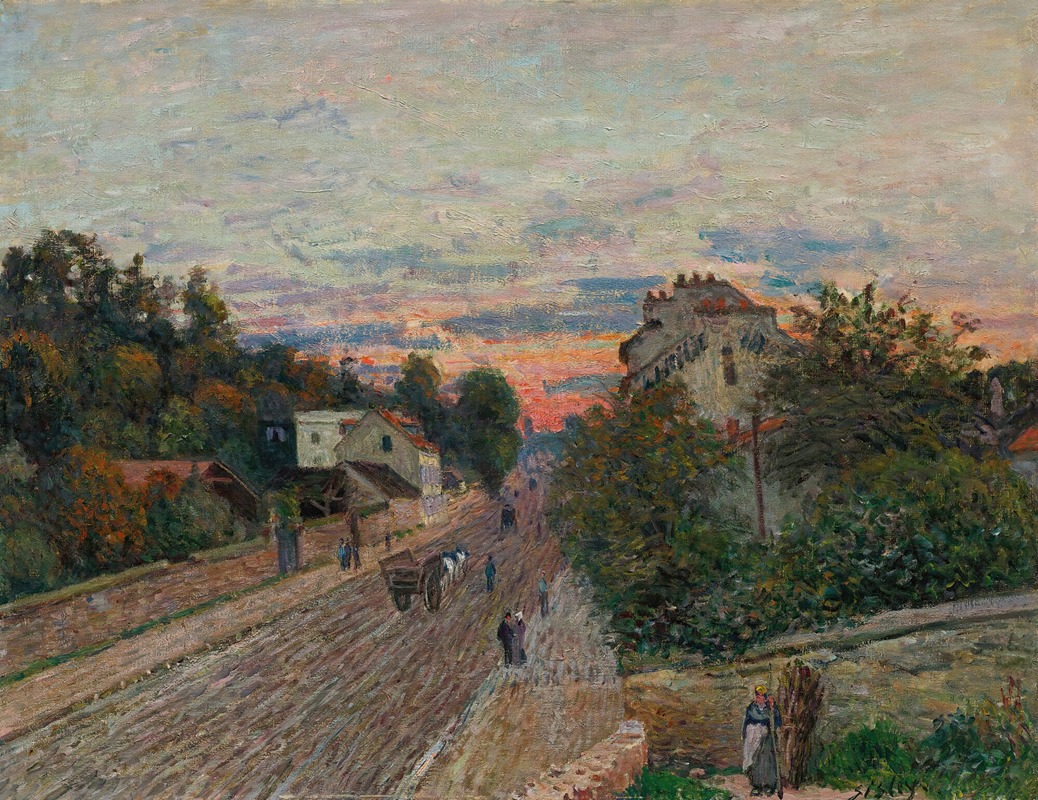
Coucher De Soleil, La Route De Versailles À Chavilles
A hand-painted replica of Alfred Sisley’s masterpiece Coucher De Soleil, La Route De Versailles À Chavilles, meticulously crafted by professional artists to capture the true essence of the original. Each piece is created with museum-quality canvas and rare mineral pigments, carefully painted by experienced artists with delicate brushstrokes and rich, layered colors to perfectly recreate the texture of the original artwork. Unlike machine-printed reproductions, this hand-painted version brings the painting to life, infused with the artist’s emotions and skill in every stroke. Whether for personal collection or home decoration, it instantly elevates the artistic atmosphere of any space.
Alfred Sisley, a prominent figure in the Impressionist movement, painted "Coucher De Soleil, La Route De Versailles À Chaville" in 1879. This artwork exemplifies Sisley's dedication to capturing the transient effects of light and atmosphere, a hallmark of the Impressionist style. Sisley, born in Paris to British parents, spent most of his life in France, where he developed a profound connection with the French landscape, which is evident in his work.
"Coucher De Soleil, La Route De Versailles À Chaville" translates to "Sunset, The Road from Versailles to Chaville." This painting is a testament to Sisley's ability to depict the serene beauty of rural France. The scene captures a moment at sunset, with the road leading from Versailles to Chaville bathed in the warm, golden hues of the setting sun. The composition is characterized by its soft, diffused light and the harmonious blend of colors, which evoke a sense of tranquility and natural beauty.
Sisley's technique in this painting reflects his mastery of plein air painting, a method that involves painting outdoors to directly capture the effects of light and atmosphere. This approach was central to the Impressionist movement, allowing artists to depict scenes with a sense of immediacy and authenticity. In "Coucher De Soleil, La Route De Versailles À Chaville," Sisley employs loose brushwork and a delicate palette to convey the ephemeral quality of the sunset. The sky is rendered in shades of pink, orange, and purple, while the road and surrounding landscape are depicted in muted earth tones, creating a cohesive and balanced composition.
The road itself serves as a central element in the painting, guiding the viewer's eye through the composition and into the distance. This use of perspective not only adds depth to the scene but also invites the viewer to contemplate the journey along this tranquil path. The presence of trees lining the road further enhances the sense of perspective and frames the composition, adding to the overall harmony of the piece.
Sisley's choice of subject matter reflects his interest in capturing the everyday beauty of the French countryside. Unlike some of his contemporaries who focused on urban scenes or historical subjects, Sisley remained committed to depicting the natural world. His paintings often feature rivers, roads, and rural landscapes, emphasizing the changing effects of light and weather.
Throughout his career, Sisley faced financial difficulties and struggled to gain the same level of recognition as some of his fellow Impressionists, such as Claude Monet and Pierre-Auguste Renoir. Despite these challenges, he remained dedicated to his artistic vision, producing a body of work that is celebrated for its lyrical beauty and technical skill.
Today, "Coucher De Soleil, La Route De Versailles À Chaville" is appreciated as a quintessential example of Sisley's contribution to the Impressionist movement. The painting captures a fleeting moment of natural beauty with sensitivity and precision, reflecting Sisley's deep appreciation for the landscape and his mastery of the Impressionist technique. His work continues to be studied and admired for its ability to convey the subtle interplay of light, color, and atmosphere, making it a significant piece in the history of art.





